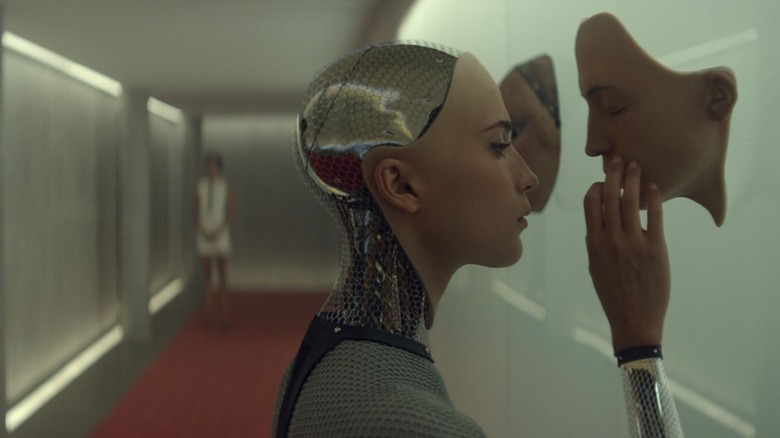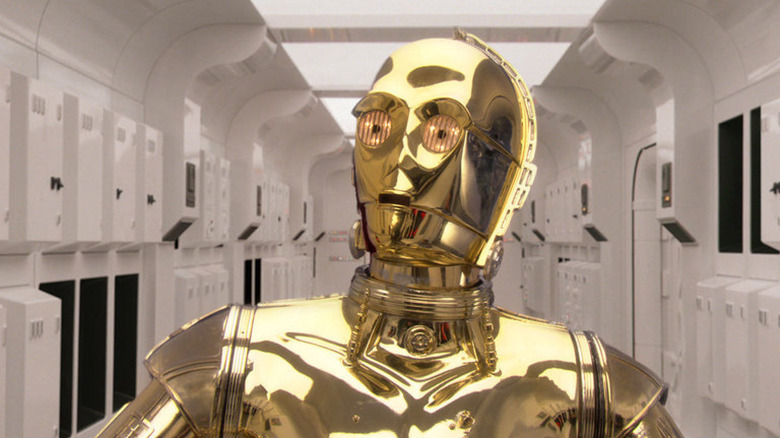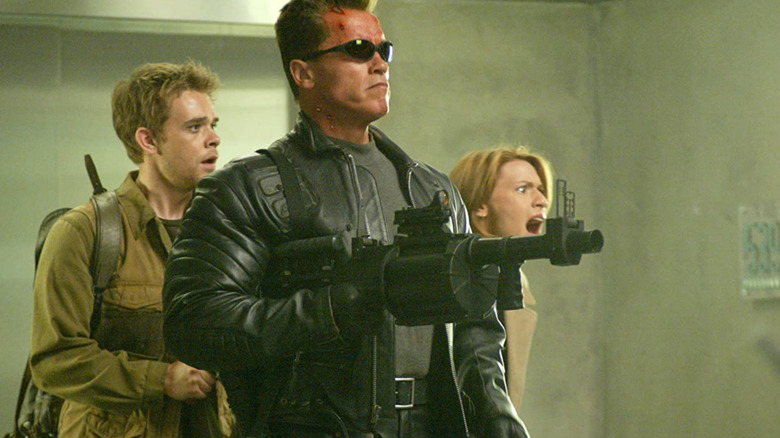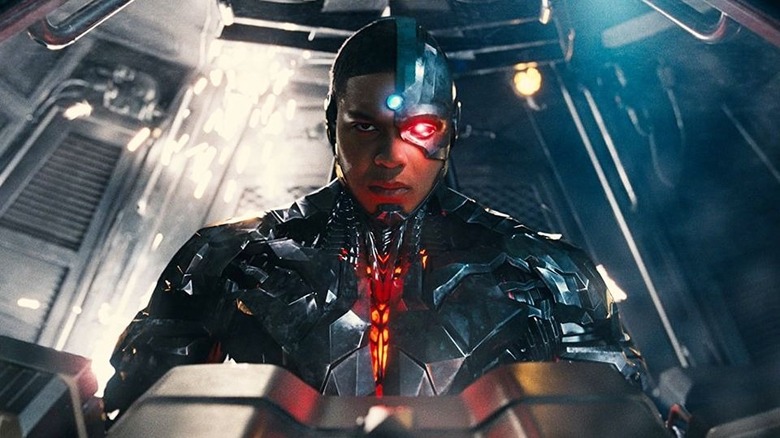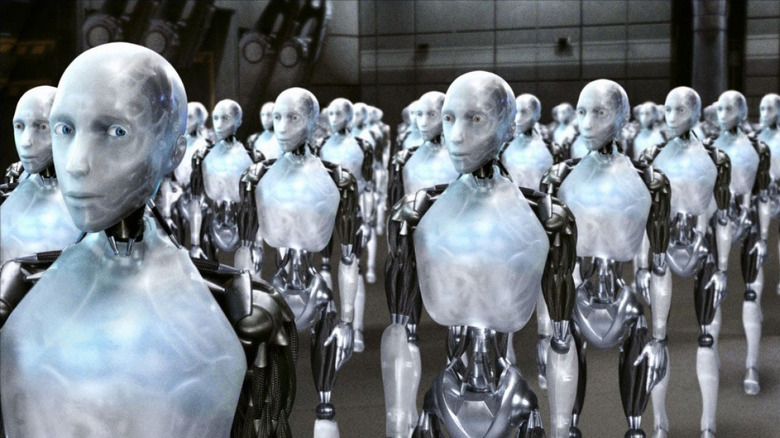How Realistic Are Robots In Movies Like Terminator And Ex Machina?
Robots have been a point of intrigue in both real life and entertainment media since before robots as we know them today even existed. In fact, tales of "metal people" precede modern robotic technology by centuries, and ancient engineers were making mechanical automata long before humans were harnessing the power of electricity and building computers. The robots of today are far more advanced than anything our ancestors could have dreamed up, but how do the androids and cyborgs in movies like "Ex Machina," "Star Wars" and "The Terminator" measure up to our current technological reality?
Holy humanoids, Batman!
Both C-3PO from "Star Wars" and Ava from "Ex Machina" are examples of humanoid robots, meaning they were designed to resemble, move, and act like humans in some capacity. There are many types of robots, but sci-fi and superhero media often rely on the concept of androids and other humanoid robots when it comes to creating interesting characters, likely because people will be able to connect with non-human characters that still have a lot of human qualities — and also because the concept of realistic robot people is equal parts cool and unnerving.
Although we may not always realize it, the work that goes into being human is far more complex than can be easily or quickly replicated. The reality is that each of our functions have to be broken down and recreated separately rather than thrown together all at once into a single machine. For instance, replicating human movement, facial expressions, and intelligence are often separately studied and engineered, and combining all of these things can get complicated or even be considered inefficient in certain instances. That said, while the ultra-advanced humanoid robots we see in movies aren't yet a reality, they do exist in various, more specialized, and comparably primitive forms.
Moving like humans is hard
One major difference between our fictional friends and real-life androids is the simple act of walking. In the movies, they can walk, run, and get back up when they fall down. In reality, however, the technology required to make robots move like us is still being developed and perfected. In fact, most robots that can mimic the way humans walk, like the bipedal robots developed by Agility Robotics, don't tend to look particularly human, while the ones that look the most like us walk in a very robotic fashion — or not at all.
Take, for instance, the Ameca android. Developed by UK-based company Engineered Arts, Ameca looks suspiciously like the bots that stressed Will Smith out in "I, Robot," and is being touted as "the world's most advanced human-shaped robot representing the forefront of human-robotics technology." Watching videos of Ameca in action, it's easy to see how such a claim can be made, especially when considering just how life-like Ameca is, right down to the fluidity of its strikingly human-like facial expressions, upper body movements, and ability to engage in conversations and physical interactions in real-time. That said, for all its very impressive and advanced "humanness," Engineered Arts has stated that Ameca is not yet capable of walking, citing the challenges that come with getting robots to simultaneously walk and talk just like people.
"There are many hurdles to overcome before Ameca can walk. Walking is a difficult task for a robot, and although we have done research into it, we have not created a full walking humanoid. However, Ameca is a modular robot, we plan on upgrading its abilities over time so one day Ameca will walk."
Walking and talking are different things
While Ameca can't yet chase anyone down the street in a cyberpunk dystopia, another advanced humanoid robot named Sophia achieved the ability to walk in 2018, two years after her creation in 2016. Sophia has generated a lot of buzz for being particularly advanced and lifelike, but her walking and overall movement are not nearly as graceful as what has been achieved with Ameca.
Watching Sophia move is still quite impressive, but it's obvious that she won't be running any marathons or jumping across buildings any time soon. In fact, it takes a total of 12 powerful motors just to achieve the slow, steady steps that Sophia takes, and that's okay! Hanson Robotics designed Sophia "as a personification of our dreams for the future of AI, as well as a framework for advanced AI and robotics research, and an agent for exploring human-robot experience in service and entertainment applications," and so it makes sense that her creators were likely less concerned with making her walk exactly like a person, and more interested in just getting her on her feet to supplement their goal of allowing for more interaction with her artificial intelligence.
In comparison, Ameca's expressive face alone is powered by 17 motors, and its creators are clear in stating their primary goal is creating "True-to-life human characters that make jaws hit the floor and cause delight to ripple through an unsuspecting crowd" as opposed to developing AI, stating that
"We love designing and building robots, we'll leave it to you and all the other amazing (naturally intelligent) brains out there to create the AI and machine learning algorithms and see how far we can progress the technology together."
Considering this, it makes sense that they would hold off on giving their bot such slow, clunky movement and opt to research and develop a walking tech that more closely aligns with their mission instead.
Cyborgs and bionic enhancements
When looking at the challenges that come with just getting robots to move in a realistic human manner, it's safe to say that the ultra talkative and uber dextrous androids in movies just aren't realistic because the technology isn't quite there yet. On the other hand, cyborgs technically exist. Unlike completely mechanical robots, cyborgs are defined as "any living being that has both organic and mechanical/electrical parts that either restore or enhance the organism's functioning." By this definition, anyone with electronic or bionic prosthetics, implants, or enhancements can technically be considered a cyborg of sorts – though it's probably best to just stick to calling other people "people" to avoid unintentional dehumanization and possibly looking like a jerk.
Although not quite as advanced the robo-tentacle arms fused to Doc Ock's body and consciousness, and certainly nothing like the "human brain in a robot body" concept in "Alita: Battle Angel," a regular human being named Kevin Warwick became known as the world's first human-cyborg in 1998 when he had a radio frequency ID transmitter implanted into his left arm. The implant enabled him to successfully connect his nervous system to a computer so that he could send and receive signals that allowed him to remotely control a robotic hand. Warwick has since had the implant removed but continues to be a proponent of cybernetics. He has also cited "The Terminator" as a source of inspiration for his work and research.
All things considered, movie bots are...
...not very realistic as a whole, but the technology to create them is being developed piece by piece. Artificial intelligence exists, but putting it inside of a robot that also walks and talks like humans is another feat entirely. Robots that can walk like us still look very much like robots and not at all like the type of machine you can start a family with. While our real life robots aren't like the ones on the big screen, they're still pretty cool – and perhaps just a few short technological advances away from becoming our new overlords.
